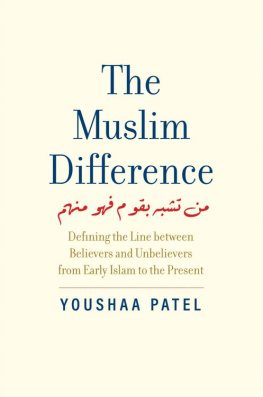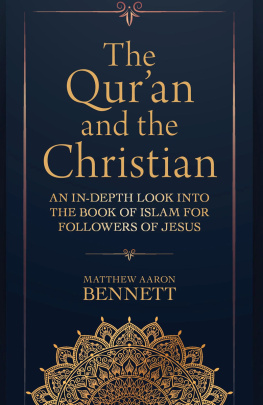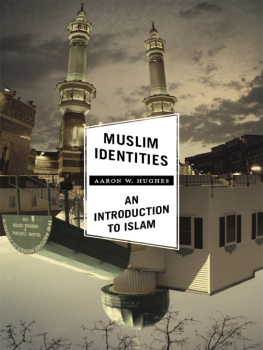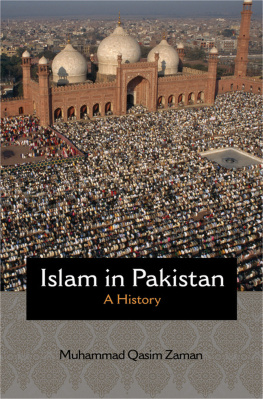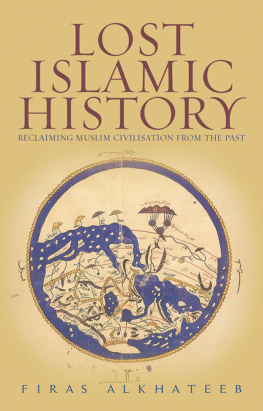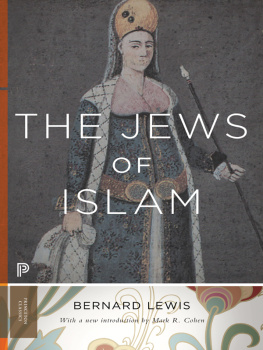The Muslim Difference
The Muslim Difference
Defining the Line between Believers and Unbelievers from Early Islam to the Present

Youshaa Patel

Published with assistance from the foundation established in memory of Calvin Chapin of the Class of 1788, Yale College.
Copyright 2022 by Yale University. All rights reserved. This book may not be reproduced, in whole or in part, including illustrations, in any form (beyond that copying permitted by Sections 107 and 108 of the U.S. Copyright Law and except by reviewers for the public press), without written permission from the publishers.
Yale University Press books may be purchased in quantity for educational, business, or promotional use. For information, please e-mail (U.K. office).
Set in Adobe Garamond type by Integrated Publishing Solutions.
Library of Congress Control Number: 2022930222
ISBN 978-0-300-24896-8 (hardcover : alk. paper)
A catalogue record for this book is available from the British Library.
This paper meets the requirements of ANSI/NISO Z39.48-1992 (Permanence of Paper).
To my mother
Contents
Preface
EDINBURGH, SCOTLAND (1982)
Im in a group all by myself, I told my mother one day after returning home from primary one, the equivalent of kindergarten. I was five years old, quiet, and well behaved. Yet Ms. McGowan had chosen to physically set me apart from my classmates, seating me alone at a desk in a corner while everyone else learned together in groups. A former teacher, my mother was shocked. School was a place not only to learn but to socializea place where children learn how to conform, respect authority, and belong. The following day, she visited my class and witnessed firsthand how I was being segregated from the other children. Always ready to speak her truth, despite her diminutive size (she was barely five feet tall), she confronted Ms. McGowan. She argued that isolating a child is psychologically damaging: He needs to socialize with his peers or he will think that something is wrong with him, that he is different. But Ms. McGowan countered that I was simply too different to be included in group activities. She reasoned that it was in the best interest of both me and my peers that I learn alone. But in her reasoning, my mother saw discrimination. I was, after all, the only student of color in my class. Hurt and frustrated, my mother took her case to the school administration, hoping for support. But those officials, too, refused to acknowledge what had become obvious to my motherthat Ms. McGowans teaching methods were discriminatory. The incident was a tipping point for my mother, who had been told to go back to your own country, among other racist insults, blatant and subtle, since moving from Bombay to Edinburgh with my father in 1973. We may have looked different, but we did not deserve to be treated differently. My mother resolved to move our family to the United States, a nation of immigrants, hoping to find greater equality. We emigrated that same year.
CHICAGO, ILLINOIS (2002)
I pick up the story two decades later in Chicago, where I am now a recent college graduate pursuing a career in management consulting. One Friday, I was sitting in a mosque on the North Side of Chicago listening to a sermon (khuba). The preacher, a well-known Sufi shaykh in the local Muslim community, proclaimed that Muslims must be differentnot just on the inside, by cultivating virtuous character, but on the outside as well, by dressing distinctively. Delivered as the U.S. government was launching its post-9/11 war on terror and intensifying its surveillance of American Muslims, the sermon urged the congregation to resist the mounting pressure to assimilate. I listened attentively, waiting to hear how the Sufi shaykh would draw from Islamic tradition. But instead of citing the Quran, he invoked the charismatic authority of the Prophet Muhammad, citing hadiths that urged Muslims to be different from Jews and Christians, including the well-known saying Whoever imitates a people becomes one of themimplying that if Muslims copied the ways of other people, they would eventually become like them and lose their religion. Being different, he argued, was in fact an Islamic doctrine. But as I left the mosque that day, I was still not convinced. If Muslims must indeed be different, how different must they be?
That question lingered in my mind as I made the decision later that year to change my profession and enter the academy. I enrolled in Duke Universitys graduate program in religious studies, with a focus on Islam.
DAMASCUS, SYRIA (FEBRUARY 2010)
The sermon in Chicago on Muslim difference inspired a term paper that gradually evolved into a dissertation directed by my advisor, Professor Ebrahim Moosa. Although I was initially reluctant to devote several years of my life to this subject, during a visit to Princeton University, Professor Michael Cook convinced me that this topic was indeed worthy of my time: It would be like throwing a small brick into a large window. With this small act of destruction in mind, I opted to undertake my dissertation research at the Asad National Library in the ancient city of Damascus, home to a monumental yet unpublished manuscript of the Ottoman Arab Sufi jurist Najm al-Dn al-Ghazz. The civil war that would soon engulf the country had yet to break out, although some signs indicated that all was not well.
As part of my research, I was attempting to acquire all available copies of the manuscript. I had already obtained digital copies from the Chester Beatty Library in Dublin and Sleymaniye Library in Istanbul, but had yet to obtain the two copies held by the Asad National Library, which, according to its manuscript catalogue, included the authors original handwritten copy. It was conventional practice among researchers and libraries across the world to trade manuscripts of comparable value, a custom that reminded me of my childhood days trading baseball cards. I was hoping to trade my gorgeous copy from the Sleymaniye Librarya complete copyfor the ones held in the Asad National Library. Having visited the institution regularly over the course of nearly a year, I had built relationships with several administrators. I had good reason to be optimistic when I offered to trade my digital copy for theirs. I waited several days but didnt hear back. Finally, an administrator notified me that the library had rejected my request for a trade, claiming that my digital copy was, in fact, incomplete. I was shocked. I had reviewed my copy of the manuscript thoroughly and had no reason to believe that it was incomplete. In my mind, this was a fair trade.
I was now in the final month of my stay. Prepared to leave Damascus with my mission only partially accomplished, I received a message from one of my Arabic and Islamic studies teachers, Dr. Issam Eido, a graduate of the University of Damascus who had trained under the hadith master Shaykh Nr al-Dn Itr. He informed me that while visiting Dr. Tawfq Raman al-B, son of the late Shaykh Sad Raman al-B, he heard someone mention a top secret project: a plan to publish a critical edition of Najm al-Dn al-Ghazzs treatise! Dr. Issam mentioned my interest in the treatise to the source of this news, who agreed to arrange a meeting for me with the managing editor, Nr al-Dn al-lib.
Several days later, I found myself sitting in the office of Nr al-Dn al-lib, who was planning to publish Ghazzs treatise the following yeara project that been kept secret for five long years. As we began talking, Nr al-Dn surprised me with his candor. He first apologized on behalf of all Arabs for their
Next page
